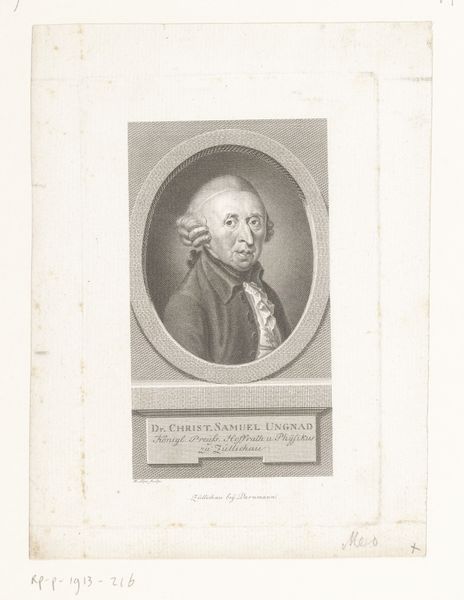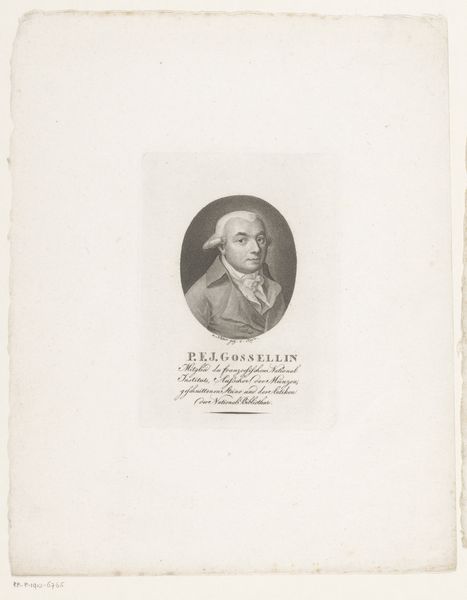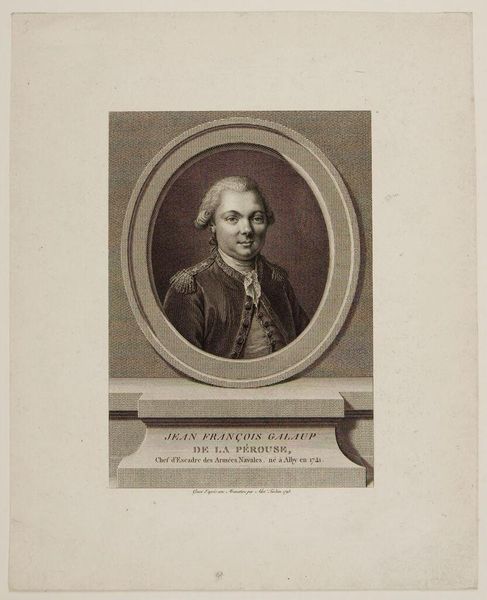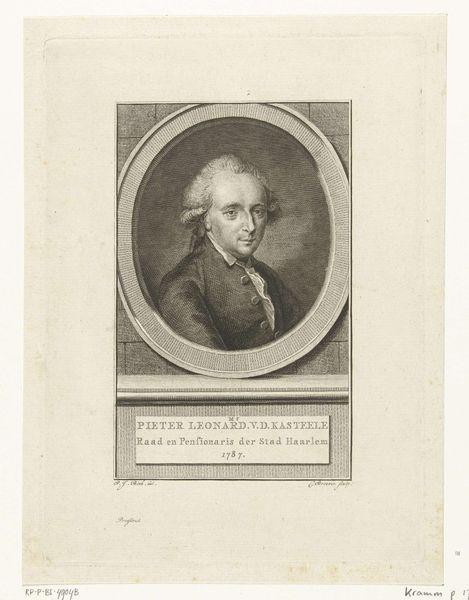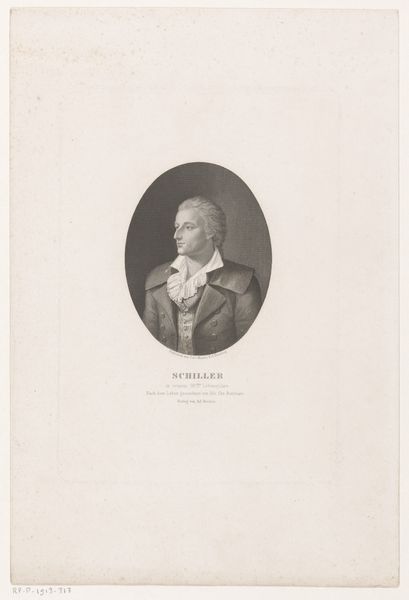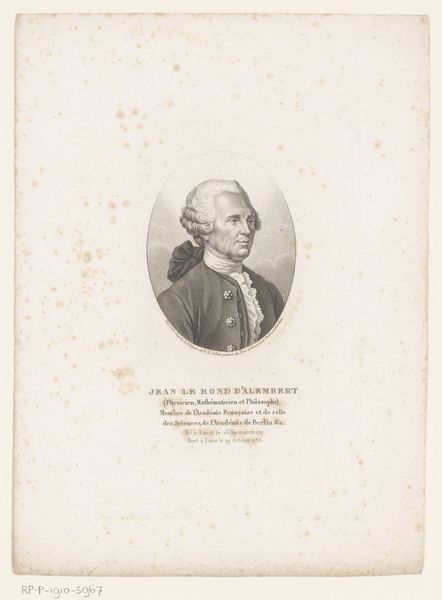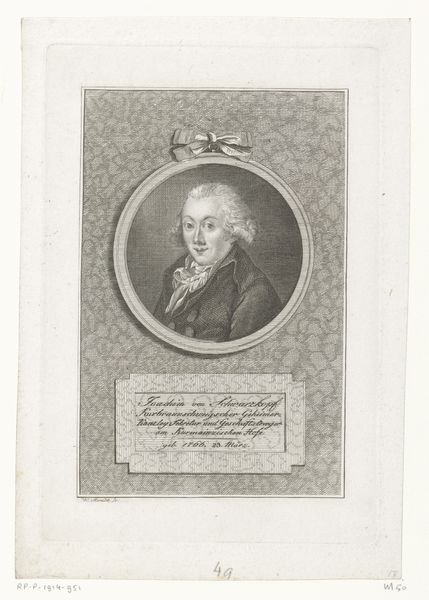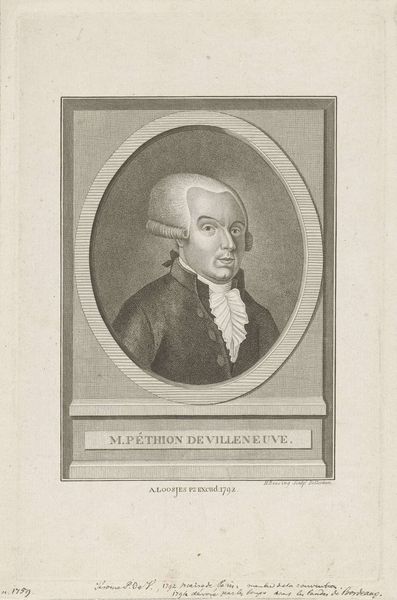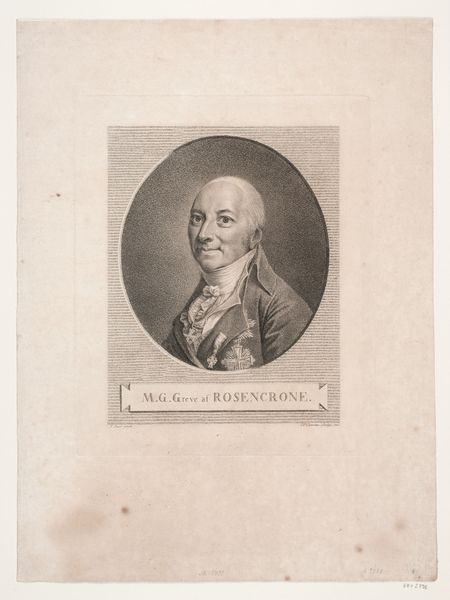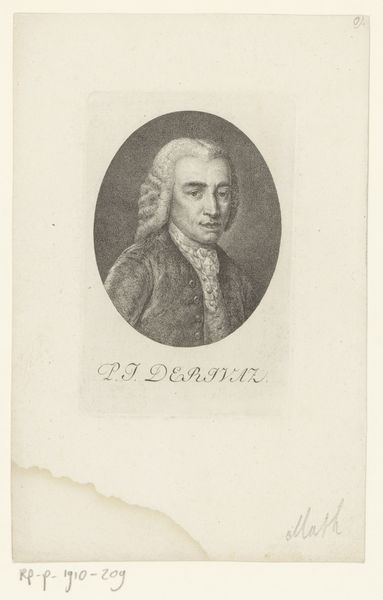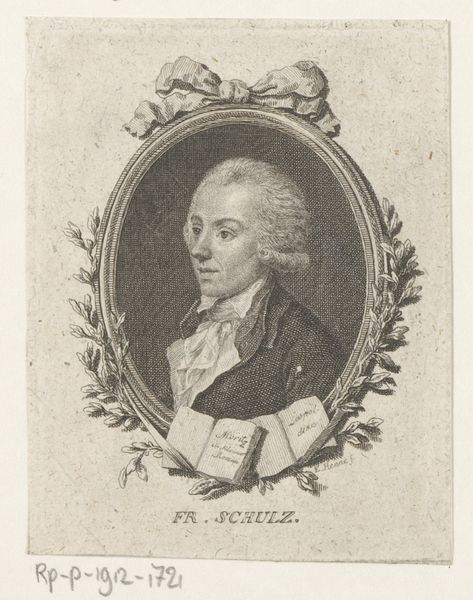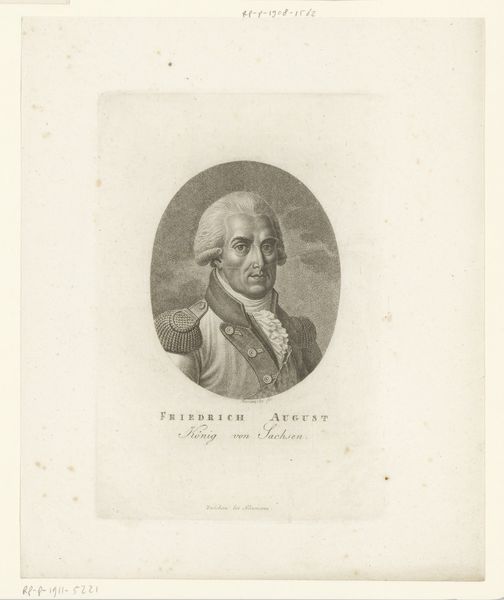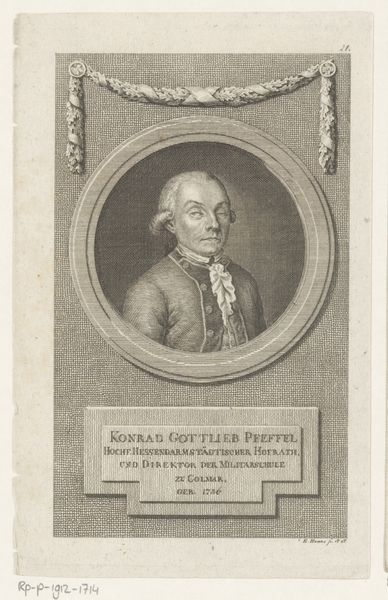
drawing, pencil, engraving
#
portrait
#
pencil drawn
#
drawing
#
neoclacissism
#
light pencil work
#
shading to add clarity
#
old engraving style
#
pencil
#
pencil work
#
engraving
#
realism
Dimensions: height 234 mm, width 174 mm
Copyright: Rijks Museum: Open Domain
Curator: So, here we have a delicately rendered portrait of Pieter Leonard van de Kasteele, dating back to 1787, and currently held here at the Rijksmuseum. The artist, François Joseph Pfeiffer, captured van de Kasteele in a precise, neoclassical style. Editor: Immediately, it strikes me as a man trapped in a perfect oval, a sort of Enlightenment snow globe. All that pale refinement staring back, a hint of powdered wig, but also a gaze that feels unexpectedly modern. Curator: Yes, that "snow globe," as you put it, reflects the conventions of portraiture at the time—idealized and refined to convey status. Van de Kasteele was a significant figure; the inscription below identifies him as the pensionary of Haarlem, a kind of legal advisor and representative for the city. Editor: Still, beyond the political finery, I'm getting a sense of slight melancholy. It's there in the eyes, a little burdened perhaps by the weight of those civic duties, or maybe it's simply the inherent melancholy of anyone forced to sit for a portrait for hours on end. Curator: And Pfeiffer’s use of pencil and engraving—though offering precise lines that were esteemed at that time—served the function of illustrating the sitter with both fidelity and idealization, emphasizing social role through careful, linear design. Editor: But isn’t there a bit of tension there, that old battle between precision and personality? The lines are meticulous, the form correct, and all in service of preserving not just a likeness but an impression of importance. But you glimpse some deeper humanity, even as the technique almost seems to deny it. Curator: Indeed. The power dynamic inherent in commissioning portraits played a crucial role. Sitters sought to project authority. Pfeiffer’s success lay in blending that ambition with the artistic trends. He presented his patron, Van de Kasteele, within a broader tradition of civic virtue. Editor: And maybe that little tension, the human versus the official, that's what makes it fascinating still. It gives the artwork a sense of silent conversation across centuries, a man both grand and simply present. Curator: Absolutely, observing how past generations presented themselves gives valuable insight. The painting highlights social history through one man’s place and rank within a given time. Editor: A quiet observation, and perhaps even something strangely, personally affecting. It leaves us pondering how both likenesses and lives endure long after, don’t they?
Comments
No comments
Be the first to comment and join the conversation on the ultimate creative platform.
